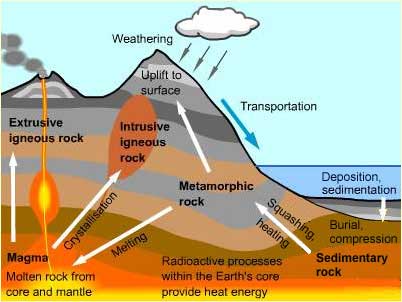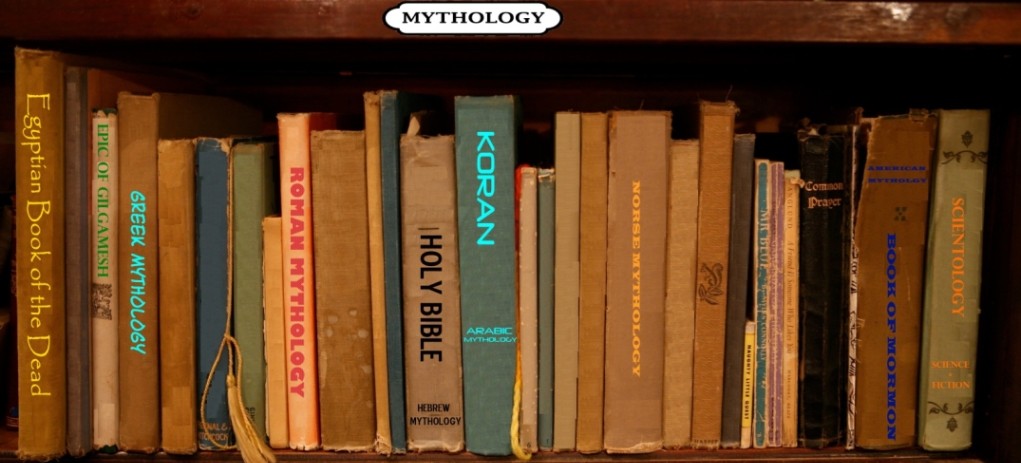
This essay is about what do we do with our consciousness, every waking minute of thought: model the future and plan behaviors in the world that we consider doing the next minute, week, month, or even years from now. Hell, we even plan what will happen to us after we die, instructing our descendants that our ashes be spread off our fav ocean-side cliff.
Consciousness is for planning, scenario spinning; providing a virtually infinite choice of behaviors. Our unlimited imaginations extend even to visions of pure fantasy that could never become real behaviors that we or anyone else could undertake. Think Harry Potter or the voluminous sci-fi literature…or our wistful daydreams. Yet on a more mundane level the accomplishments that are possible in our lifetimes are also nearly unlimited (constrained only by our physical capabilities, innate talents and social skills, or maybe just our bank accounts). We might imagine ourselves hoisting the Stanley Cup, (forgetting for the moment we are old and slow and never had that level of athletic talent anyway), or only making love to foreign girls (but we never hit that jackpot and bought the private Lear jet). Despite the occasional flights of fancy in our wildest daydreams, we also regularly envision many practical accomplishments that most of us will accomplish one day: getting educated to find a career, having a family, enjoying comfortable digs, maybe traveling a bit and giving back to others when we get older.

All of us partake in the advancements of science daily thru the continuing rapid change and use of modern technology, and even the least theoretically minded average Jane understands electricity, gravity, the weather, some medicine and biology, even basic astronomy which would astound a citizen of any culture from any time just 100 years removed (much less a thousand), from our time here in the early 21st century. What the average modern world citizen knows today and takes for granted would be as Arthur C. Clarke predicted: “indistinguishable from magic” to even a highly educated person at the turn of the century: automobiles and now electric cars, air travel, having been to the moon, unmanned missions to the planets and beyond, gravitational waves, the Higgs boson, vaccines, birth control, fracking, routine heart bypass and stent surgeries, ultrasound, MRI, antibiotics, computing, personal computers, wifi and smartphones, TV, the Net, artificial limbs, cochlear implants, statins and anti-depressants, laser surgery and barcode scanning. The list goes on and on: all fueled by the continual conceptual modeling of the world going on in our heads, that allows our unlimited imaginations… and the realization of so much of it in just the past 200 years or so.
To the Founding Fathers, Renaissance thinkers, or the medieval mind, we would truly be seen living in a world of incomparable magic. How a 1st century Greek or Roman or a Neolithic farmer would react is really something to ponder. And our animal cousins: the rat, crow, chimp, and your dog know none of this. The purely perceptual world of sights and smells has not changed for them or their ancestors over millions of years since the distant past because they have nothing like our conceptual-laden consciousness in which we as individual selves, aware of our own attention (as in Michael Graziano’s Attention Schema Theory) move in space and time (concepts themselves not accessible to our animal cousins) thru a world model in our heads populated with objects, animals, people, and events upon which we theorize all manner of causal processes that operate on those objects and living things in our thirst for explanations. This reality of vaccines and barcodes and un-observable concepts and entities like gravitational waves or the Higgs particle was first constructed as pure imagination in somebody’s head. We indulge our insatiable thirst for explanation in fantasy, art, and not only science, but in daily practical fixes and problem solving.
Like, just how to get the kids to school on time and still finish cleaning the kitchen before guests arrive after work tonite, while checking to make sure there’s enough gas to make it to the grocery store after the other errands because we don’t get paid until tomorrow and there wont be enough money for both groceries and gas. This is a pretty typical plan of behaviors, juggling a number of variables and then carrying out this plan first formulated using that world model we carry in our heads that would utterly mystify and is totally unavailable to your dog. This is what we do with consciousness: imagine mundane chores and scientific discoveries, and plan our education and marriage ceremony, even our own funeral service. Without this ever-expanding interconnected conceptual-laden model in our heads we could have no behaviors beyond those of the rat, dog, chimp or crow. Their perceptual world is the same to them as their Paleocene ancestors experienced. Our world, the one in our heads that we built on the same perceptual input as they receive, has been inextricably altered by our conceptual thought and theorizing, seeking explanations for the processes going on around us, discovering the entities and their causal interactions which occur at every level of analysis, peeling further and further deeper into the layers of the reality we construct from the photons hitting the back of our retinas and the sound-waves impinging on our eardrums. This sensory input is all we or the other animals have for our minds to process.
And like our ancestors and theirs, modern day animals have nothing else. But we modern humans now have our conscious world of concepts, which map onto that input non-randomly. We have this constructed model in our heads. It is not a “controlled hallucination” as is fashionable among some perceptual researchers to describe our conscious experience. Whatever we ultimately see or hear and explain is there, it is not fantasy, not hallucinated. We may never directly see an electron, much less a quark or a quantum field fluctuation, but these things make up our consciousness as much as pain and comfort, trees and dogs, birthday parties and the passage of time. When we claim to see a tree or a dog when no such collection of atoms is there reflecting light to our eyes in the correct pattern that emanates from a real tree or a dog, then we are hallucinating. But when we detect such consistent and non-random patterns of sensory input that do originate in a collection of atoms (or protons and neutrons, or the quarks they are made of or the vibrating strings quarks are theorized by some to be ultimately made of), that comprise trees and dogs we are constructing a model of that object or animal that rather accurately corresponds to whatever it is ultimately “out there” outside of our heads. Our conscious experience goes way beyond that of our animal cousins, solely because of our concepts and our elaborate and ever-expanding conscious modeling of the world we find ourselves in, and the imagined futures we construct nearly every minute of every waking day. This experience is not an illusion, is not mere perception at all and exists as much as any other internal state or feeling. We cannot hand-wave it away in some form of philosophical denial.
Animals can certainly perceive objects and other animals, your dog will spot that squirrel or nail that Frisbee mid-air, but he doesn’t conceive of animals or objects (or people, not even you his beloved owner). We relate all things we know in an intricate web, possibly unlimited in its connections between ideas: objects, people, animals, events, relations, space, time, and so on. The “semantic network” as they call it. Unlimited (so far as we know) in capacity and ability to build upon, interconnect. We do so much more than mere perception. And we are not disembodied rational machines, detached symbol-crunching computers made of meat. We are emotional decision-making dream-weavers not housed in, but enmeshed with a body that provides a perspective from within its boundaries.
Feelings, itchiness, sadness, all the emotions as they occur, and our body schema, feeling our joints and skin and anti gravity muscles when we put our shoes on and standup, that is as integral a part of our consciousness as is its conceptual content and continual planning. We take all that embodiment of our selves for granted most often, but watch a Parkinson’s patient try to negotiate that when all the little muscle commands aren’t getting thru: the awkward, off-balance, shuffling, cautious, uncoordinated gait…we feel all that as part of our conscious experience, building that into this machines attention schema is just as important, the model of ourselves as a thinking-feeling-navigating-scheming-laughing being, that experiences these feelings and reflects on them near simultaneously.
Animals feel pain, but don’t know they are in pain, don’t reflect “I am in pain”, not having a concept of “I” or “pain”… what I am and ALL that I am experiencing at this a moment along with the pain.
“I’m worried my cancer is coming back, maybe I just ate something funny, or its just a reaction to my meds, it may pass soon, do I have enough time before my shift starts to just quietly sit here and see if it does and it is truly nothing? Oh shit, I still have to clock in and go get my apron, and now I think I have to go to the bathroom…feeling a bit nauseous, and I can’t go home, I left early yesterday, and I need this paycheck not to be short again”
Not your dog, nor some virtual machine simulation with an artificial attention schema built-in would feel or think any of this. Embodiment is not an accessory or philosophical trifle to be dispensed with to reveal true rationality. The dog whimpers in pain but it stops there. Our experience of the feeling of pain is accompanied by our selves experiencing the pain and all the thoughts that go with our selves being situated in the moment of place (at work) (in my home state) (in the Northern Hemisphere of the 3rd rock from the Sun, in one arm of the Milky Way) at a particular time, (5 minutes before my shift) (after I took the kids to school) (on my last Tuesday before Xmas vacation), (in my 36th year) (12th year of marriage) (4 years after mom died) (in the year of our lord 2012) and so on.
Not your dog, nor some proposed intelligent machine in some AI theoretical paper, would experience any of this conscious rumination which effortlessly runs thru a person’s head, any person’s head, in half the time it took me to write it. And it took much of our extended childhood to develop.
This is human consciousness. There is absolutely no evidence any animal experiences anything like this conceptual menagerie of spatial locations, time events, duration, subjective experience, objects, people, events, causal processes, relations, abstractions…the entire model we walk thru and envision every waking moment. The machine would need to have all this built in: an episodic memory store of the self’s life full of experiences, a sense of self, an embodiment of feeling within a body in a given posture, an internal mood and internal states, fullness, nausea, cramps, warmth, location, at this moment in time, pain, need to urinate, etc, etc., No human-like consciousness without all of this. Your dog may feel the need to pee as we do with similar pain and sense receptors and a physiology as we have, but he doesn’t know he needs to urinate, doesn’t know what a feeling or “urination” refers to, and doesn’t re-represent himself in that state as we do thinking:
“Wait a tic, I need to pee first”.
So when did that elaborate model first evolve? Was Lucy, at 3 million years removed from our time, conscious as we are, or just as much a meat puppet, a mere perceptual responder: aware and alert, but self-unawares like your dog, utterly clueless to all the objects and events and causal processes happening all around them at every minute?

The wind in the trees is felt by Fido to be sure, but how that wind and all weather comes about (the rotation of the earth and the production of wind, the solar heating, the moisture from the oceans, the thinness of the atmosphere, the warmth of the landmasses, the reflectance properties of the ice sheets)…and so on and so on, is inaccessible to canines. You think your dog or Lucy for that matter have/had any of the conceptual or causal capabilities to understand any of the simple explanations of weather if we could try to teach them? Would Lucy look back flummoxed as we babbled on? Even if we could find a shared language, would she have any more capacity than our furred and feathered friends: the chimp, rat, dog, and crow, to understand the concepts of an earth, wind, moisture, or the combined abstraction of weather as a causal process of all these and other objects, events, and properties? Could Homo erectus living at 1 million years B.P., grok any of this if we could attempt to explain it or would they sit there as clueless and unresponsive to causal explanations and world-modeling as your dog?
If I am on the right track, and it is conceptual ability that is the key to our unparalleled cognition and consciousness, then we could look for evidence of concepts, causal process understanding, spatial relations, self-recognition and the like in the archaeological record of our distant ancestors. Emotion is an important component of our conscious experience, and more importantly the recognition and re-representation of emotion and our self, experiencing that emotion. It is a necessary component of the world model in our heads that we see ourselves moving thru, in the past remembrances from our episodic memories to the expectant hopeful or dreaded imaginings of what we will be doing and experiencing in the near and far future. Without that model of objects, people, animals, events, and causal explanations with our embodied selves in the middle of it, we would be as clueless as the dog fooled by the immobile statue of the human who wont engage in playing fetch or the monkey infant clinging to a terry cloth covered “mother” made of wire and flashlight parts for a face.
Did Homo heidelbergensis at 500,000 years B.P. have a knowledge of events? Did she have a concept of time (comparative duration) at least: that for example, it took a fire’s burn time (45 min. to an hour to us) before we have to add more wood…to make a decent handaxe? And that interval was shorter than whittling and fire-hardening a thrusting spear, and much, much, less time than skinning, scraping, rubbing (with the animal’s brains), a hide to prep it for drying and use in shelter, clothing, or as a blanket?
Did erectus characterize those 3 tasks-obvious to us as wholly separate individual actions, processes, behaviors, events (4 more concepts alone right there): as being handaxe flaking, spear fashioning, and hide prepping; all separate activities which took different times to accomplish? Did they conceptualize them as tasks, as events? Did they at least have that comparative ability to sense time duration without having any of the incremental measures of minutes and hours, or days, months, years that we take for granted as mere common knowledge?
The child development literature explicates the successive and wholly separate concepts within our idea of “time”: duration, succession, incremental measure, present, past, future,- which the child acquires slowly across her early years. Did any of our ancestors have even a sense of the morrow, of a day, a “today”? Was it not until late in human evolution (maybe in just the last 20,000 year when suggestive notations appear in the archaeological record) that the phases of the moon, day, and seasonal changes, were even noticed, and noticed as recurrent, as repeating events? Was the similarity of the moons successive positions from west to east, new moon to full to last quarter to new again, even seen as a repeating cycle? A cycle that repeats like other cycles: the seasons, spring flood, movements of the suns arc thru the sky to and fro during a year?
Time is but one blanket concept composed of a number of wholly separate and complex concepts in themselves. Thousands of similarly complex and hierarchically nested concepts: objects, people, animals, events, and so on without limit make up our daily effortless, conscious thought. It takes an entire childhood, well into adolescence to acquire them. How might they have evolved? How might the capacity to even notice such concepts evolve?
I’ve written on consciousness multiple times before. I consider myself a reporter, a science journalist for this task, attempting to synthesize what we have learned thus far from neuroscience and psychology: both cognitive and developmental psych about how our consciousness develops in children and how it works in them and adults. We weren’t born with our concepts, they take time to acquire, including the central and un-removable embodied sense of self. I suspect rather strongly our conceptually-laden consciousness did not evolve all of a piece, nor very early in our human career.
Much more to come
4/1/20. No foolin’ at all.
(238)
